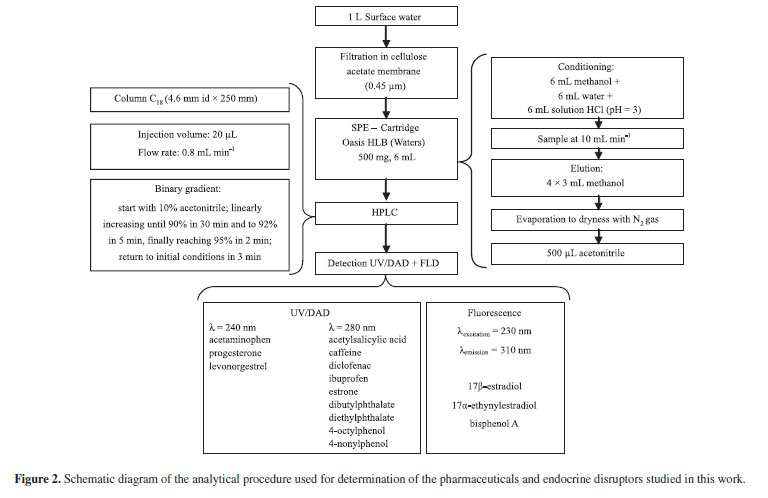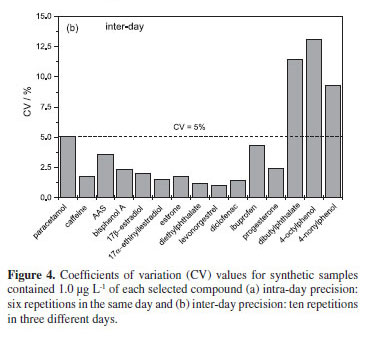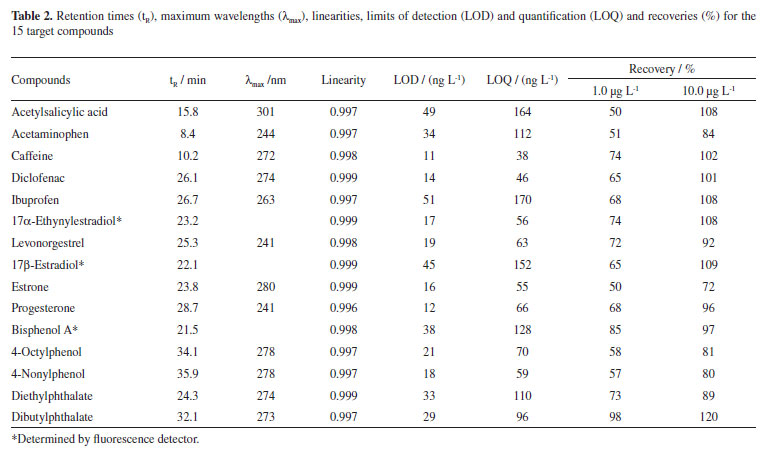A single run optimization chromatographic method for the determination of 15 emerging contaminants in surface water was optimized using solid-phase extraction (SPE) and high performance liquid chromatography (HPLC) with detection through ultraviolet-diode array (UV-DAD) or fluorescence (FLD). Selected compounds included acetaminophen, acetylsalicylic acid, diclofenac, ibuprofen, caffeine, 17β-estradiol, estrone, progesterone, 17α-ethynylestradiol, levonorgestrel, diethylphthalate, dibutylphthalate, 4-octylphenol, 4-nonylphenol and bisphenol A. Quality parameters of the proposed method showed a linearity r² > 0.996, coefficient of variation lower than 5%, recoveries between 80 to 120% for a spike of 10 µg L-1 for each of the 15 compounds. The lowest limit of detection (LOD) was 38 ng L-1 for caffeine, whereas the highest value was 170 ng L-1 for ibuprofen. The method was applied to the spatial and seasonal monitoring of these compounds in the Atibaia River, which is the main drinking water source for Campinas City (São Paulo State, Brazil). Among the 15 selected emerging contaminants, 10 were detected at least once. The lowest concentration determined was 0.096 µg L-1 for diclofenac, whereas caffeine showed concentrations as high as 127 µg L-1.
pharmaceuticals; endocrine disruptors compounds; solid-phase extraction; liquid chromatography with diode array detection; liquid chromatography with fluorescence detection; Atibaia River Basin











